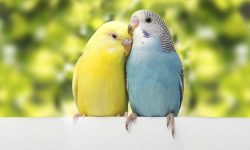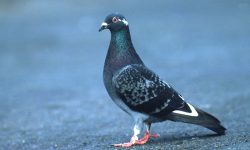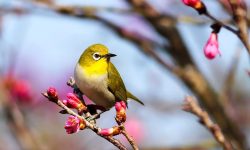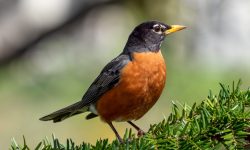Yellow-green parrots are charming, intelligent companions known for their vibrant feathers and playful personalities. Whether you’re caring for a budgerigar, a conure, or another colorful parrot species, this guide will walk you through how to provide proper care, nutrition, and enrichment.
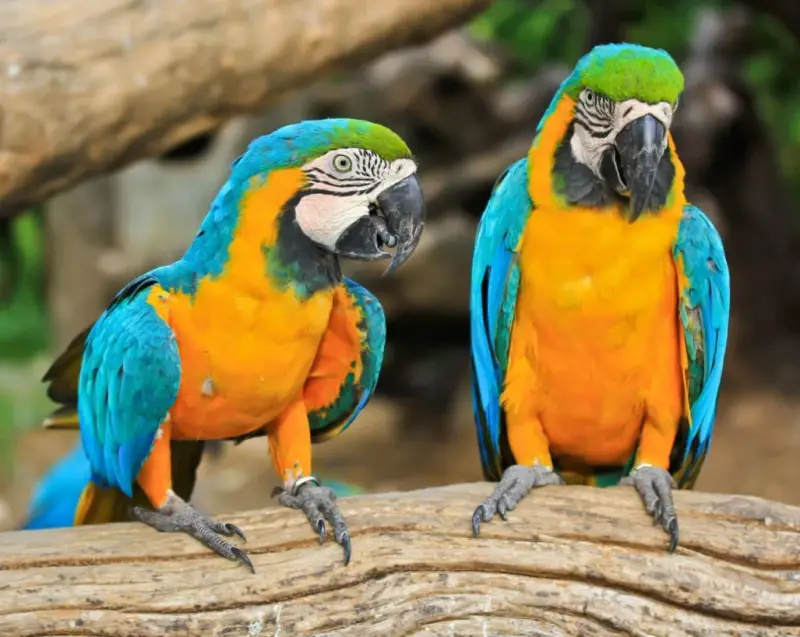
Understanding Your Yellow-Green Parrot
Species Identification
At first glance, a yellow-green parrot may seem like a single species, but in reality, this vibrant color combination appears in several beloved pet birds. Among the most common are budgerigars (budgies), green-cheeked conures, and lovebirds—each with their own distinct traits. While they may share similar size and coloration, their dietary preferences, vocal tendencies, and social needs can differ subtly but significantly.
Identifying the exact species isn’t just about satisfying curiosity—it’s essential for providing the right care. For example, budgies require slightly different nutritional ratios than conures, and lovebirds tend to form stronger pair bonds and may become stressed if kept alone. Knowing your bird’s species helps you choose the correct cage size, perches, enrichment tools, and dietary supplements to keep them healthy and happy. If you’re unsure, a consultation with an avian vet or breeder can help you determine your bird’s background and specific needs.
Behavior and Personality
Yellow-green parrots are more than just pretty feathers—they’re bright minds in tiny bodies. Known for their remarkable intelligence and emotional depth, these parrots are constantly observing, learning, and responding to their surroundings. They often form strong bonds with their caregivers, recognizing faces, responding to voices, and even mimicking words or household sounds with surprising clarity.
Their social nature means they crave interaction and routine. Without enough stimulation—whether it’s playtime outside the cage, talking sessions, or puzzle toys—they may develop undesirable behaviors like feather plucking or excessive screaming. But with the right balance of attention and mental challenges, they blossom into affectionate companions, full of quirky antics and joyful chirps.
From performing tricks to dancing to music, yellow-green parrots love to be part of the family. They’re not the type to sit silently in a corner; they want to engage with you, challenge your intelligence, and become part of your daily rhythm.
Setting Up the Ideal Habitat
Cage Requirements
Creating a comfortable, enriching environment begins with choosing the right cage—your parrot’s entire world in miniature. The size of the cage should match the bird’s species and activity level. For small parrots like budgies or lovebirds, the absolute minimum is 18 x 18 x 24 inches, though larger is always better. For active climbers like green-cheeked conures, opt for an even more spacious enclosure to accommodate their need for movement and exploration.
Pay special attention to the bar spacing—too wide, and a curious bird could get its head stuck; too narrow, and it restricts climbing opportunities. Horizontal bars are a must, allowing your parrot to climb naturally, which helps build strength and coordination.
Inside the cage, think of each item as a tool for physical and mental well-being:
-
Natural wood perches in different sizes keep feet strong and prevent pressure sores.
-
Toys that encourage chewing, foraging, and problem-solving are essential to fight off boredom and mimic the challenges they’d face in the wild.
-
Sturdy food and water dishes should be secured away from perches to prevent contamination.
-
Most importantly, install a secure locking mechanism. Many parrots are smart enough to figure out simple latches and will gladly go on an unauthorized adventure!
Location and Environment
Your parrot’s emotional well-being is just as important as its physical health. The location of the cage plays a critical role in both. Aim for a quiet, well-lit space that’s neither too isolated nor too chaotic. A living room corner or a family room—where daily human activity happens—strikes the right balance. Parrots are flock animals, and being near their “human flock” helps them feel safe and included.
However, be mindful of hazards like smoke, kitchen fumes, and direct drafts from air conditioning or windows. These can be harmful to their sensitive respiratory systems.
To mimic their natural environment, maintain a regular day-night rhythm. When the sun goes down, covering the cage with a breathable cloth helps create a cozy, dark space that signals it’s time to rest. This ritual promotes healthy sleep habits and reduces nighttime stress.
By offering a secure, stimulating, and peaceful habitat, you’re laying the foundation for a happy, thriving yellow-green parrot—one that sings, plays, and bonds deeply with its human companion.
Feeding Your Yellow-Green Parrot
What to Feed Daily
A vibrant yellow-green parrot deserves a diet that’s as colorful and dynamic as its plumage. While many new owners assume seeds are enough, a healthy parrot thrives on a balanced and varied diet—one that supports energy, vibrant feathers, and a long life.
Start with high-quality pellets as the dietary foundation. These specially formulated morsels ensure your parrot receives all essential vitamins, minerals, and amino acids in the correct ratios—something seeds alone cannot provide.
Add a daily serving of fresh vegetables, especially dark leafy greens like spinach, kale, and chard. Crunchy, nutrient-dense options like carrots, bell peppers, and broccoli provide not only vitamins but also enrichment through texture and color. Rotate offerings to keep meals interesting and nutritionally complete.
In moderation, offer fruits such as apple slices (with seeds removed), banana, berries, or mango chunks. While parrots adore the natural sweetness of fruit, too much sugar—even from natural sources—can lead to weight gain and other health issues.
Seeds and nuts can be given sparingly as treats. Use them strategically during training sessions or to build trust. While sunflower seeds and almonds are favorites, moderation is key—they are high in fat and can easily lead to obesity.
To round out the diet, consider adding whole grains like cooked brown rice, oats, or quinoa. These provide energy and variety and help mimic the diverse foraging patterns parrots engage in in the wild.
Foods to Avoid
Not everything that’s safe for humans is safe for parrots. In fact, some common foods are highly toxic to birds and should be avoided at all costs:
-
Avocado contains persin, which can cause heart failure in birds.
-
Chocolate, caffeine, and alcohol are all neurotoxins to parrots.
-
Onion and garlic, while flavorful to us, can damage a parrot’s red blood cells.
-
Salty or sugary processed snacks, even in small amounts, can lead to long-term health problems.
If you’re ever unsure about a food item, it’s best to err on the side of caution or consult an avian vet.
Fresh Water
Hydration is just as important as nutrition. Make sure your parrot has access to clean, fresh water at all times. Use a sturdy ceramic bowl or avian-safe water bottle, and clean the container daily to prevent bacterial buildup or mold.
A good rule of thumb? If you wouldn’t drink it yourself, don’t offer it to your parrot.
By focusing on a rich, diverse, and safe diet, you’re doing more than filling your bird’s belly—you’re fueling its song, energy, and joyful personality day after day.
Daily Care and Enrichment
Social Interaction and Training
Yellow-green parrots are deeply social creatures. Their emotional and mental well-being depends on daily interaction with their human companions. Simply talking to your parrot throughout the day, playing gentle games, or allowing supervised out-of-cage time can greatly enrich their lives. They thrive in environments where they feel like part of the flock—and for a pet parrot, you are their flock.
Training isn’t just about teaching tricks—it’s a vital form of mental stimulation and trust-building. Using positive reinforcement (like small treats or verbal praise), you can teach your parrot to step up, wave, or even speak simple words. Regular training sessions also help reduce negative behaviors such as biting, screaming, or feather-plucking, which often stem from boredom or lack of attention.
A well-socialized parrot is not only easier to care for but also more confident, curious, and affectionate.
Toys and Activities
Mental stimulation is just as important as physical exercise for parrots. Without it, they may become restless or destructive. A bored parrot can quickly turn into a frustrated one.
To keep your yellow-green parrot entertained, provide a rotating selection of toys, changing them weekly or rearranging their positions inside the cage. This mimics the novelty of a wild environment and keeps them engaged.
Great toy options include:
-
Foraging puzzles that make them work for treats
-
Chewable items like bird-safe wood blocks, coconut husks, or loofahs
-
Swings, ladders, and ropes for climbing and balance
-
Shreddable paper toys that satisfy their natural instinct to tear things apart
You don’t always have to buy expensive toys—homemade ones using bird-safe materials can be just as effective. The key is variety, texture, and challenge.
Grooming and Hygiene
Parrots are naturally clean animals, often spending hours preening their feathers. However, they do benefit from some human-assisted grooming routines to stay at their healthiest.
Allow your parrot to bathe or be misted with water a few times a week. Some parrots enjoy shallow bowls for splashing, while others prefer a light spray. Bathing helps remove dust, refreshes feathers, and keeps skin supple.
Keep an eye on nail length, especially if your parrot isn’t wearing them down naturally on rough perches or toys. Overgrown nails can affect their grip and balance. If needed, have a vet or experienced bird handler trim them safely.
Also monitor the beak for overgrowth, cracks, or discoloration. A healthy beak should appear symmetrical, smooth, and slightly glossy. Any irregularities may indicate dietary deficiencies or underlying health issues.
Lastly, ensure the cage is kept clean and sanitary. Spot clean daily—removing droppings, leftover food, and soiled paper. Perform a thorough cleaning of perches, toys, and cage surfaces at least once a week using bird-safe disinfectants. A clean environment prevents bacterial growth and reduces the risk of respiratory infections.
Health and Common Concerns
Signs of a Healthy Parrot
To keep your yellow-green parrot thriving, it’s important to recognize what good health looks like. A healthy parrot is a lively, curious, and interactive companion. You’ll notice:
-
Bright, clear eyes that are wide open and alert
-
Smooth, clean feathers with no bald patches or signs of plucking
-
Active behavior, such as climbing, chirping, and exploring their cage
-
Steady appetite and consistent weight, with regular interest in food and treats
-
Clean, dry nostrils and a well-shaped beak
Your bird’s behavior and body language are key indicators of their condition. A parrot that plays, vocalizes, and interacts confidently is likely in good health.
Signs of Illness
Parrots, like many birds, are skilled at hiding symptoms of illness until they’re seriously unwell. This is a survival instinct in the wild, but for pet owners, it means vigilance is essential. If you notice any of the following signs, seek veterinary care immediately—preferably from an avian specialist:
-
Fluffed-up feathers for extended periods, especially when paired with low activity
-
Unusual quietness or lethargy, especially if your parrot is normally vocal and playful
-
Labored breathing, visible tail bobbing when inhaling, or wheezing sounds
-
Changes in droppings, such as diarrhea, unusual color, or undigested food
-
Refusal to eat, sudden weight loss, or picking at food without swallowing
-
Discharge from eyes or nostrils, or crust around facial features
-
Balance issues or sitting at the bottom of the cage
Catching health problems early gives your parrot the best chance of recovery. Even a subtle change in behavior—like hiding more often or being unusually quiet—can signal something serious.
Preventive Care Tips
To minimize the risk of illness:
-
Keep the cage and food dishes clean
-
Offer a varied, nutrient-rich diet
-
Provide daily interaction and exercise
-
Maintain good air quality—avoid smoking, strong chemicals, or nonstick cookware fumes
-
Schedule regular check-ups with an avian vet
A happy, healthy parrot is one that is stimulated, well-fed, and deeply bonded with its human family. Don’t overlook even the smallest changes—your attention can make all the difference.
Finding an Avian Vet
Caring for your yellow-green parrot goes beyond daily feeding and playtime—it also means being prepared for health concerns before they arise. One of the most important steps in responsible parrot ownership is establishing a relationship with a qualified avian veterinarian.
Why an Avian Vet Matters
Parrots have complex physiology that differs significantly from cats, dogs, or even small mammals. General vets may not be trained to recognize early signs of illness in birds or know how to treat them effectively. That’s where an avian-certified veterinarian becomes essential.
An avian vet is specifically trained to diagnose and treat bird-related health issues, perform specialized tests, and offer guidance on behavior, nutrition, and preventive care.
When to See a Vet
-
Annually, for a full health check-up and nutritional review
-
Immediately, if you notice any signs of illness or behavioral changes
-
During emergencies, such as injury, bleeding, or sudden collapse
-
When introducing a new bird, to screen for diseases or parasites
Even seemingly minor issues—like sneezing, weight loss, or feather picking—can quickly escalate without the right care.
How to Find a Trusted Avian Veterinarian
Not all veterinarians treat birds, so it’s important to locate an avian specialist in your region. To find one:
-
Search directories from organizations like the Association of Avian Veterinarians (AAV)
-
Ask bird breeders, shelters, or pet stores for recommendations
-
Read reviews and confirm the vet has hands-on experience with parrots
-
Visit the clinic beforehand, if possible, to check for cleanliness, staff knowledge, and bird-friendly handling practices
Keep the vet’s contact information easily accessible, and know their after-hours or emergency referral options. Building a relationship with your vet before a crisis ensures faster care when your parrot needs it most.
Breeding and Nesting (Optional Care)
While not every parrot owner plans to breed their birds, some may become curious about the process—especially if they have a bonded pair. Breeding yellow-green parrots such as budgies, conures, or lovebirds can be a rewarding experience, but it requires careful preparation, commitment, and knowledge.
Should You Breed Your Parrots?
Breeding is not as simple as placing two birds in a cage. It involves understanding genetics, ensuring optimal health, and being prepared to care for delicate hatchlings. This step is not recommended for beginners due to the high risk of complications, stress on the female bird, and the time-intensive care required for chicks.
Before attempting to breed your parrots, you must ensure:
-
The pair is bonded: Breeding should only be attempted with a proven, compatible male-female pair. Forced pairings often lead to aggression or failure to nest.
-
You have a proper nesting box: Install a clean, secure nesting box appropriate to your parrot’s species. It should be placed in a quiet area of the cage to provide privacy.
-
Your birds are in peak health: Both parrots should undergo a veterinary check-up to rule out nutritional deficiencies or illnesses that could endanger the chicks.
-
You’re prepared for chick care: Raising baby parrots requires feeding schedules every few hours, temperature control, and knowledge of fledging and weaning stages.
Ethical and Legal Considerations
Some parrots may be subject to breeding restrictions or permit requirements depending on your location. Always check local regulations before breeding birds. Additionally, consider the responsibility of finding proper homes for the young parrots once they are weaned.
If you’re unsure about breeding but find your parrots laying eggs, consult an avian vet or experienced breeder. Sometimes egg-laying can occur without fertilization, and improper handling can endanger the female.
Conclusion
Caring for a yellow-green parrot requires dedication, knowledge, and daily interaction. From a balanced diet rich in vegetables and pellets to a spacious, enriching environment, every detail contributes to a long, happy life for your feathered friend. With proper care, many of these parrots can live 10 to 20 years or more, offering companionship, laughter, and vibrant color every day.

